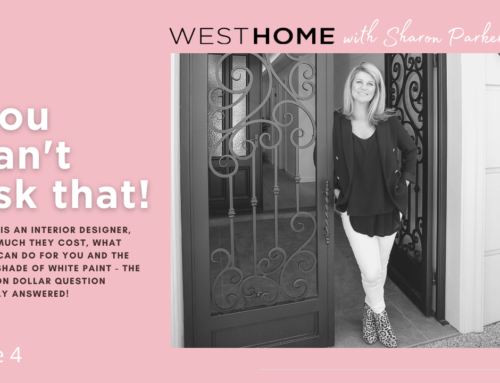One of the best times of the year has to be Colourful Kitchen Appreciate Week. And what a week it is. Anecdotally I’m hearing that CKAW (yep, you know it’s legit when it has an acronym) has been inspiring some action in homes all around Melbourne. Peeps be inspired beyond the colour of their kitchens, to form a plan or undertake a project in the imminent future that will give them the kitchen of their dreams.
I’m pumped about that, and I’m committed to helping you realise that vision. I want to make sure you are as informed as possible on elements that make up the kitchen space. So I’m diving deep on kitchen related topics like the humble but oh so important fridge (the fridge door is the most opened door in the house after all).
If they say the kitchen is the heart of the home, then the fridge is one of the key oxygen vessels. Could it possibly be one of the most essential items in the home? Outside of the toilet and water tap, I’m struggling to think what item in the home could beat it in terms of its indispensable nature. Anyway, I digress.
I wanted to know what I need to know when it comes to choosing a fridge…. what style is most popular, what limitations there are in selecting a certain type of fridge, what fridge myths there might be which it’s time to bust…. I have questions that need answering.
So I chatted to Matt, from Fisher & Paykel for his words of fridge wisdom. If there is something he doesn’t know about home appliances then it’s not worth knowing.
Here’s the skinny from Matt:
What are people looking for in fridges these days?
Fridges shouldn’t be just about keeping food cold, a good fridge will actually keep food fresher for longer.
The trends have changed over the years as people’s shopping and food habits have changed (i.e. we shop more regularly, less in bulk, freeze less, get food delivered and think more as foodies). Also with the internet we have got better at research. This has driven popularity in products like the French door fridge (opens like a two-door pantry, and has a freezer at the bottom). These are out-selling designs such as the side by side (long skinny freezer, next to long skinny fridge) or freezers at the top (think about how often you open your freezer, compared to your fridge!).
The French door is particularly popular because the doors are smaller, meaning they don’t open as far into the kitchen space. The freezer at the bottom is also often a drawer, meaning you bring the food out to you, rather than having to dig around in a freezing black hole. French door fridges are particularly good in smaller spaces, with their two smaller doors rather than one big one, it means they intrude less into the kitchen space.
Other things people are looking for include:
- Energy efficiency
- Variable temperature zone compartments (for example – a freezer can have touch button options which let you nominate things like ‘soft-freeze’ – so instead of pulling the ice cream out at -18 degrees and needing a chisel, you can pull it out at -10 degree)
- Colour and design: More and more fridges are being designed to compliment the cabinetry – so rather than being rounded or curved, they’re flat and square, with options in colours such as matt black and arctic white (which architects are recommending to their clients).
What are some of the big unknowns for home owners looking for a new fridge?
Fridges are generally displayed as right-hinge opening (i.e. handle on the left), however it is possible with some brands to have your door open from the left-hinge.
Your fridge should compliment your kitchen, so when you’re thinking about the layout and where your bench top (where you’re dumping the groceries of course) is located, you should choose what makes most sense. The last thing you want is to obstruct your ability to get into the fridge (groceries in hand!) or limit movement throughout the space when the fridge door is open. Remember only some brands offer this, and it needs to be ordered to your preference. You can’t just buy any fridge, and have the door hinge changed.
Another big unknown is the ability to integrate fridges into joinery. It’s something that I will personally be doing in my own upcoming renovation. For me, I’m of the view that a fridge is functional and not a feature, and you spend so much on beautiful cabinetry – so why not let that be the feature? Integrated fridges have grown in sales by over 100% in the past 5 years.
One thing I see people getting caught out by is that they have not considered their fridge early in their kitchen design process. If you are opting for an integrated fridge it is critical to consider this early on to ensure the kitchen is designed accordingly. Get your cabinet maker across this early – if you plan right, it shouldn’t be complex. A good cabinet maker will tackle this like a pro.
What are the biggest issues you see when people select a fridge?
People often get excited about the ‘big’ fridge in the store (700ltr+ capacity). Whilst they’ve checked it will fit the fridge cut-out, what they don’t realise is it may not fit through the front door – with the fridge out of the box sitting in your front yard, the options are generally costly: pay to return the fridge or remove the doors of the fridge or the house.
Remember big doesn’t always mean the greatest capacity either – whilst the literage might still be high, really check how much of that is useable (i.e. does water and/or ice in the door actually take up storage space in your fridge).
Of course, if something seems like an exciting gimmick… know that it generally is (remember the TV in the fridge doors?!).
How long should you expect a fridge to last for?
A fridge is a major purchase for any house hold, and if it’s treated with care should lead a long life – hence it’s worth investing in and considering things like integration.
Where do you recommend people look to buy a fridge?
There are many reputable stockists of a range of fridges but the best will be where you have trained sales people asking you lots of questions about you and your kitchen and lifestyle needs, before they start recommending a product. Like anything, you want to be recommended the best product based on your needs, not on what a sales person is most incentivised on. Questions you should hear include:
- How big is your family?
- What sort of food do you eat?
- Do you entertain a lot?
- Is plumbing close (if you are considering ice and water)?
Other tips – things to look for:
- Good lighting – LED gives brightness and energy efficiency; no dark spots
- Easy clean stainless steel on outside
- Adjustable and tough shelves (safety glass is best as it also lets light through)
- Egg trays in doors look like a good idea, but actually impact the health of the egg (movement & temp changes)
- Good ventilation inside the cavity (fridges work most effectively when the air can circulate evenly around the cavity. Look at things like if the shelves reach right to the back wall – if they do, ventilation won’t be as good, as products that have a gap)
- Freezer drawers are far easier to find food, than those with a door and baskets
- Fruit should always be kept separate to vegetables – certain fruits (apples; pears) release gases which impact the health of other products
And finally, I’ve heard that you need to leave a new fridge a certain amount of time upright but unplugged. I’ve never asked the question why. Is this a wives tale or something to take seriously, and why is it the case?
It’s no myth. If your fridge has been laid down during transit, leave it for half an hour before turning on – reason being, it allows the oil in the compressor to settle.
Well there you go. All your fun fridge facts in one place. :)






